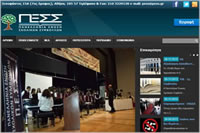What do you think of when you think of
Gothic Art? Imposing cathedrals? Creepy baby Jesus paintings? Teens in black eyeliner and JNCO jeans? Gothic art and architecture is more than its stereotypes (and if you’re thinking of modern goth fashion… it’s kind of a misnomer). This art movement was a dominant style for centuries in Europe, and gave birth to some of the continent’s most famous buildings and paintings. Let’s look at the Gothic genre in art and literature: what it is, where it came from, and why it still matters.
Right Gothic is a large multi-purpose variable type family. Its unique voice is based on the distinct details, smooth ink traps, contemporary feel, yet overall familiar letterforms ● While most modern sans serif fonts (such as Right Grotesk) have low contrast between thick and thin strokes, Right Gothic takes a step back towards serif anatomy and features a clearly pronounced contrast. The word “Gothic” in its name refers to the genre of early pre-Swiss sans typefaces, which often were sort of “serif without serifs".
The family covers all useful weights and widths, 98 styles in total: 7 weights × 7 widths × 20° Italics ▲ The power of variable fonts is now more affordable! Each sub-family goes with a Mini Variable Font covering the same range. Custom range, including adjustable contrast axis upon request! Cool, Right?
Forget the association of the word “Gothic” to dark, haunted houses, Wuthering Heights, or ghostly pale people wearing black nail polish and ripped fishnets. The original Gothic style was actually developed to bring sunshine into people’s lives, and especially into their churches. To get past the accrued definitions of the centuries, it’s best to go back to the very start of the word Gothic, and to the style that bears the name.
The Goths were a so-called barbaric tribe who held power in various regions of Europe, between the collapse of the Roman Empire and the establishment of the Holy Roman Empire (so, from roughly the fifth to the eighth century). They were not renowned for great achievements in architecture. As with many art historical terms, “Gothic” came to be applied to a certain architectural style after the fact.The style represented giant steps away from the previous, relatively basic building systems that had prevailed. The Gothic grew out of the Romanesque architectural style, when both prosperity and relative peace allowed for several centuries of cultural development and great building schemes. From roughly 1000 to 1400, several significant cathedrals and churches were built, particularly in Britain and France, offering architects and masons a chance to work out ever more complex and daring designs.
The most fundamental element of the Gothic style of architecture is the pointed arch, which was likely borrowed from Islamic architecture that would have been seen in Spain at this time. The pointed arch relieved some of the thrust, and therefore, the stress on other structural elements. It then became possible to reduce the size of the columns or piers that supported the arch.So, rather than having massive, drum-like columns as in the Romanesque churches, the new columns could be more slender. This slimness was repeated in the upper levels of the nave, so that the gallery and clerestory would not seem to overpower the lower arcade. In fact, the column basically continued all the way to the roof, and became part of the vault.
In the vault, the pointed arch could be seen in three dimensions where the ribbed vaulting met in the center of the ceiling of each bay. This ribbed vaulting is another distinguishing feature of Gothic architecture. However, it should be noted that prototypes for the pointed arches and ribbed vaulting were seen first in late-Romanesque buildings.After the great flowering of Gothic style, tastes again shifted back to the neat, straight lines and rational geometry of the Classical era. It was in the Renaissance that the name Gothic came to be applied to this medieval style that seemed vulgar to Renaissance sensibilities. It is still the term we use today, though hopefully without the implied insult, which negates the amazing leaps of imagination and engineering that were required to build such edifices.











